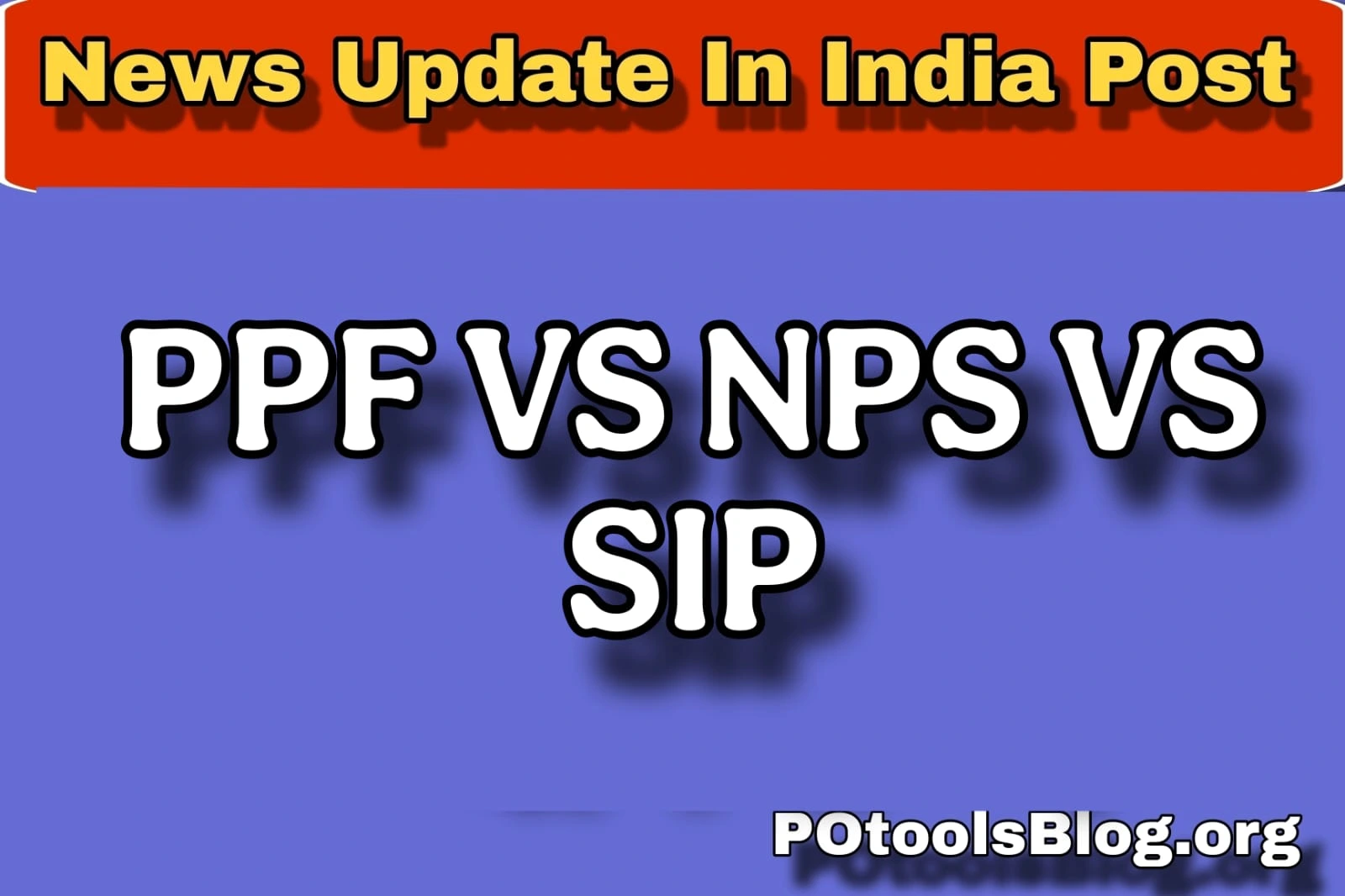Introduction
Choosing the best investment option might be difficult because there are so many different plans accessible.
In India, three well-liked investing options available on the Post Office platform are the Public Provident Fund (PPF), the National Pension System (NPS), and Systematic Investing Plans (SIPs) in mutual funds.
Each has its own special qualities, advantages, and intended audience. To assist you in selecting the choice that best fits your financial objectives, this article offers a thorough comparison.
Understanding PPF, NPS, and SIP
Public Provident Fund (PPF)
PPF is a savings plan supported by the government and intended to generate wealth over the long term. For investors who are risk averse, it provides a guaranteed interest rate and tax advantages under Section 80C.
- Tenure: 15 years, with the option to extend in 5-year increments.
- Interest rate: around 7.1% (subject to government change every quarter).
- Tax Benefits: Contributions, interest, and maturity profits are all tax-free due to the EEE (Exempt-Exempt-Exempt) classification.
Because of the government guarantee, the risk is minimal.
National Pension System (NPS)
The Pension Fund Regulatory and Development Authority (PFRDA) oversees NPS, an investment plan focused on pensions. It lets investors select their investment mix and focuses on retirement savings.
- Tenure: Until age 60, with the possibility of extension until age 75.
- Returns: Linked to the market (average 7%–10%, depending on portfolio performance).
- Tax Benefits: Section 80C offers up to ₹1.5 lakh, while Section 80CCD offers an extra ₹50,000 (1B).
Depending on asset allocation, risk might range from moderate to high.
Systematic Investment Plan (SIP)
Mutual fund investments can be made consistently and at regular periods by investors using SIP. It provides flexibility and accommodates different investing objectives.
- Tenure: Adjustable based on the investor’s objectives.
- Returns: Market-linked; historically, equity returns have ranged between 10% and 15%.
- Tax Benefits: Under Section 80C, ELSS mutual funds provide tax benefits, however, these are not immediately relevant.
- Risk: Because of market swings, moderate to high.
Key Differences Between PPF, NPS, and SIP
| Parameter | PPF | NPS | SIP |
| Objective | Long-term savings | Retirement planning | Wealth creation |
| Returns | Fixed, ~7.1% | Market-linked (7%-10%) | Market-linked (10%-15%) |
| Risk | Low | Moderate to high | Moderate to high |
| Liquidity | Partial withdrawal after 6 years | Partial withdrawal for specific reasons | Highly liquid, can be redeemed anytime |
| Taxation | Fully tax-free | Partial tax-free at maturity | Gains are taxed based on the holding period |
| Investment Limit | Min: ₹500; Max: ₹1.5 lakh/year | Min: ₹500/month; no upper limit | Flexible based on mutual fund |
Which Investment Option is Right for You?
- If you want assured returns and tax-free earnings, go with PPF.
- You can commit to a long-term lock-in and are risk averse.
- If you want to take advantage of extra tax savings while you’re saving for retirement, choose NPS.
- You like a combination of exposure to debt and equities and can manage a moderate level of market risk.
- SIP is a good option if you want to build wealth with the possibility of greater returns.
- You can choose a diversified investing strategy and assume market risk.
Conclusion
NPS, SIP, and PPF all serve distinct investing goals. While NPS is a fantastic option for retirement planning with modest risk, PPF offers the best-assured returns and tax benefits. However, despite their enormous development potential, SIPs are accompanied by market instability. Before selecting the optimal choice for you, consider your investment horizon, risk tolerance, and financial objectives.

